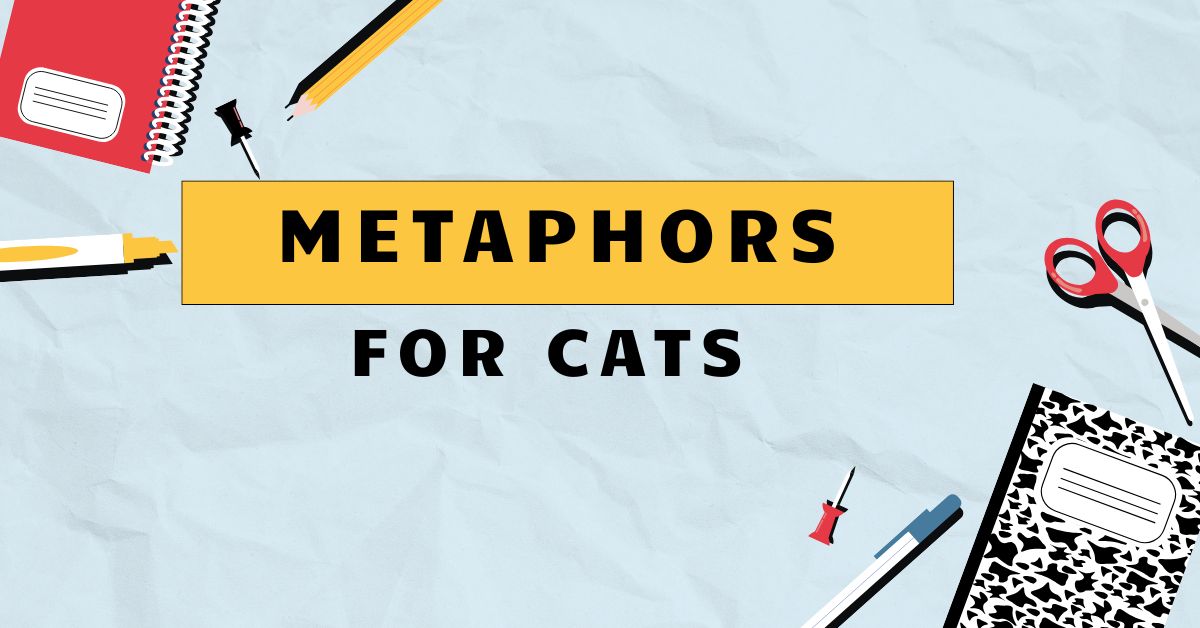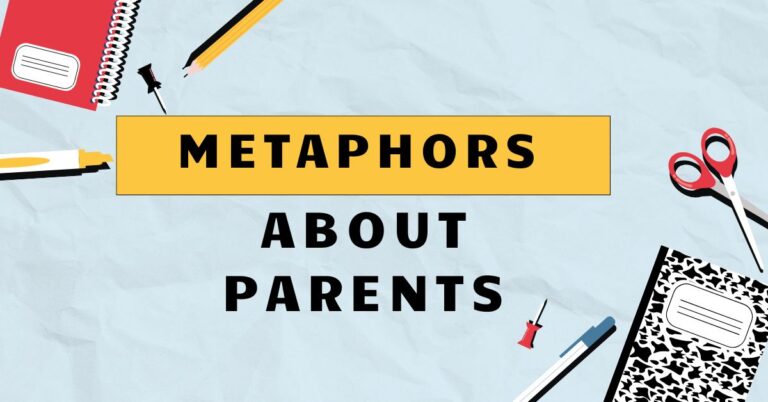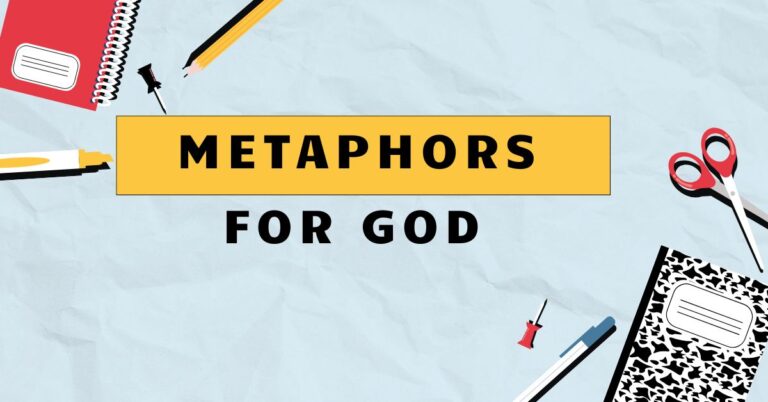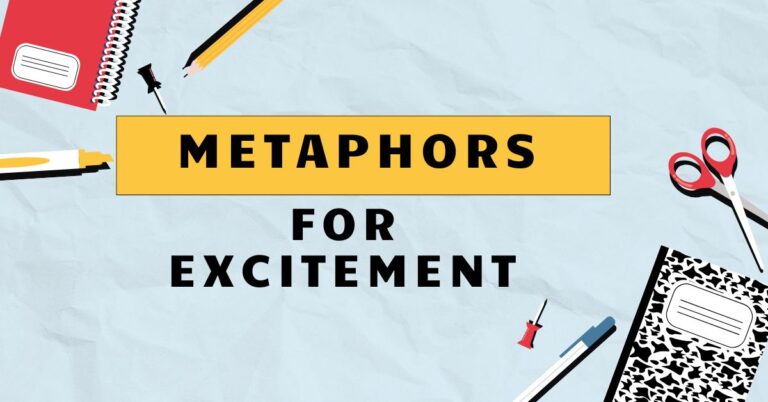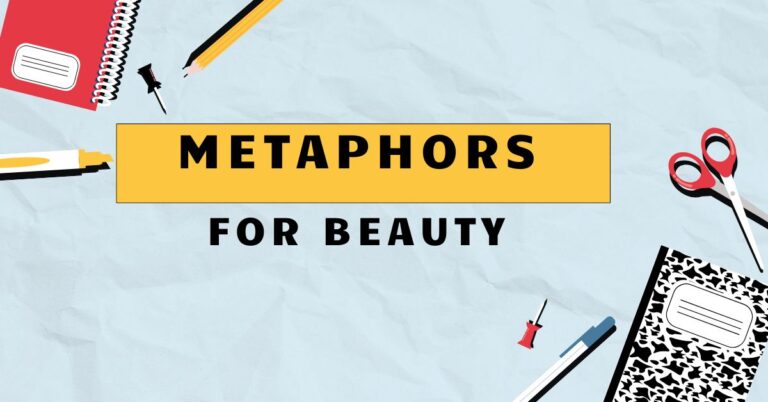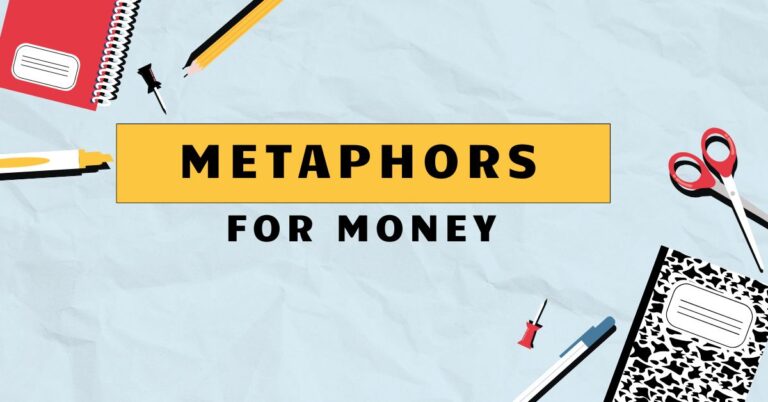53 Metaphors for Cats: A Comprehensive Guide to Figurative Language
Metaphors are powerful tools in the English language, allowing us to create vivid imagery and deeper understanding by comparing dissimilar things. When applied to cats, metaphors can capture their unique personalities, behaviors, and mystique in ways that literal descriptions often fail to do.
Understanding these metaphors not only enriches our appreciation of figurative language but also enhances our communication and creative writing skills. This article provides a comprehensive guide to metaphors for cats, explaining their structure, types, usage, and common pitfalls.
Whether you’re a language enthusiast, a writer, or simply a cat lover, this exploration will deepen your understanding and appreciation of this fascinating linguistic device.
Table of Contents
- Introduction
- Definition of Metaphor
- Structural Breakdown of Cat Metaphors
- Types of Metaphors for Cats
- Examples of Metaphors for Cats
- Usage Rules for Metaphors
- Common Mistakes with Metaphors
- Practice Exercises
- Advanced Topics in Metaphorical Language
- Frequently Asked Questions
- Conclusion
Definition of Metaphor
Ametaphoris a figure of speech that directly compares two unrelated things without using “like” or “as.” It asserts that one thingisanother, creating a connection that highlights shared qualities or characteristics. Unlike similes, which use explicit comparison words, metaphors make an implicit comparison, inviting the reader or listener to understand the underlying similarity.
Metaphors are fundamental to both creative writing and everyday communication, adding depth, color, and nuance to our language.
The function of a metaphor extends beyond mere ornamentation. It allows us to understand abstract or complex concepts by relating them to more familiar and concrete ideas.
In the context of describing cats, metaphors can capture their enigmatic nature, agility, and independence in ways that literal descriptions often fail to achieve. Metaphors can be found in literature, poetry, everyday speech, and even scientific discourse, demonstrating their pervasive role in human communication.
Metaphors operate by transferring qualities from one entity (thesource) to another (thetarget). For example, if we say a cat is “a furry alarm clock,” the source is “alarm clock,” and the target is “cat.” The shared quality being highlighted is the cat’s ability to wake someone up, often early in the morning.
The effectiveness of a metaphor depends on the clarity and relevance of the connection between the source and the target.
Structural Breakdown of Cat Metaphors
Metaphors for cats can be broken down into key structural elements that contribute to their overall meaning and impact. Understanding these elements helps in both analyzing existing metaphors and creating new ones.
The core components of a metaphor include thetenor(the subject being described, in this case, the cat) and thevehicle(the object or concept used to describe the cat). Thegroundis the shared characteristic or similarity between the tenor and the vehicle.
Thetensionrefers to the degree of difference or contrast between the tenor and vehicle, which adds depth and interest to the metaphor.
Consider the metaphor “My cat is a liquid shadow.” Here, the tenor is “my cat,” the vehicle is “liquid shadow,” and the ground is the cat’s fluid movement and ability to blend seamlessly into dark environments. The tension arises from the contrast between something living (a cat) and an inanimate substance (liquid shadow), highlighting the cat’s mysterious and elusive nature.
The effectiveness of a metaphor also depends on itscontext. The surrounding words, phrases, and overall situation can significantly influence how the metaphor is interpreted.
A metaphor that works well in one context might be confusing or ineffective in another. Therefore, careful consideration of the context is crucial when using or analyzing metaphors.
Types of Metaphors for Cats
Metaphors can be classified into several types based on how they are presented and developed. Understanding these different types allows for a more nuanced appreciation of their usage and effect.
Implicit Metaphors
An implicit metaphor implies the comparison without explicitly stating the subject. The reader or listener must infer that the cat is being compared to something else based on the descriptive language used.
This type of metaphor can be more subtle and requires greater interpretive effort.
For example, instead of saying “The cat is a velvet paw,” an implicit metaphor might describe the cat’s actions: “Velvet paws tiptoed across the keyboard.” The reader infers that the subject being described (the cat) has velvety paws due to the way it moves.
Explicit Metaphors
An explicit metaphor directly states the comparison between the cat and another object or concept. This type of metaphor is more straightforward and leaves less room for ambiguity.
It typically uses a form of the verb “to be” to connect the subject and the metaphorical term.
Examples of explicit metaphors include: “The cat is a tiny tiger,” or “My cat is a furry comedian.” These statements directly equate the cat with a tiger and a comedian, respectively, highlighting shared characteristics such as predatory instincts or humorous behavior.
Extended Metaphors
An extended metaphor develops the comparison over several lines or paragraphs, exploring different aspects of the relationship between the cat and the metaphorical term. This allows for a more detailed and nuanced portrayal, creating a richer and more complex image.
For instance, an extended metaphor might describe a cat as a “ship’s captain,” elaborating on how the cat navigates the house like a ship, surveys its territory with a keen eye, and demands respect from its crew (the human inhabitants). This extended comparison can reveal deeper insights into the cat’s personality and behavior.
Examples of Metaphors for Cats
The following sections provide extensive examples of metaphors used to describe various aspects of cats, including their personalities, behaviors, appearances, and skills.
Personality Metaphors
These metaphors capture the unique personalities of cats, highlighting their independence, aloofness, affection, and other character traits.
The table below provides numerous examples illustrating this category:
| Metaphor | Explanation |
|---|---|
| The cat is a furry enigma. | Highlights the mysterious and unknowable nature of cats. |
| My cat is a velvet dictator. | Emphasizes the cat’s demanding nature and luxurious comfort. |
| She’s a purring machine. | Describes a cat that purrs frequently and contentedly. |
| He’s a feline philosopher. | Suggests the cat is contemplative and wise. |
| The cat is a liquid shadow. | Describes the cat’s stealth and ability to blend into darkness. |
| My cat is a tiny sphinx. | Highlights the cat’s enigmatic and mysterious gaze. |
| He’s a furry alarm clock. | Emphasizes the cat’s habit of waking its owner early. |
| She’s a purrfect princess. | Describes a cat with a regal and pampered demeanor. |
| The cat is a silent judge. | Suggests the cat observes everything with a critical eye. |
| My cat is a furry hot water bottle. | Highlights the cat’s warmth and comforting presence. |
| He’s a miniature lion. | Emphasizes the cat’s courage and regal bearing. |
| She’s a velvet brick. | Describes a cat that is surprisingly heavy and dense. |
| The cat is a four-legged therapist. | Suggests the cat provides emotional support and comfort. |
| My cat is a furry Houdini. | Highlights the cat’s ability to escape from enclosed spaces. |
| He’s a purrsonification of grace. | Emphasizes the cat’s elegant and fluid movements. |
| She’s a cuddly cloud. | Describes a cat that is soft, fluffy, and affectionate. |
| The cat is a nocturnal ninja. | Suggests the cat is stealthy and active at night. |
| My cat is a sunbeam thief. | Highlights the cat’s love of basking in sunny spots. |
| He’s a master of the guilt trip. | Emphasizes the cat’s ability to manipulate its owner with sad eyes. |
| She’s a furry comedian. | Describes a cat with a playful and amusing personality. |
| The cat is a tiny overlord. | Suggests the cat rules the household with an iron paw. |
| My cat is a purring shadow. | Highlights the cat’s tendency to follow its owner closely. |
| He’s a furry little Buddha. | Emphasizes the cat’s calm and contemplative nature. |
| She’s a walking, talking purr machine. | Describes a cat that is constantly purring and vocalizing. |
| The cat is a tiny king. | Suggests the cat believes it is the ruler of the house. |
| My cat is a creature of habit. | Highlights the cat’s love of routine and predictability. |
Behavior Metaphors
These metaphors focus on the actions and habits of cats, such as hunting, sleeping, playing, and interacting with their environment.
The table below provides numerous examples illustrating this category:
| Metaphor | Explanation |
|---|---|
| The cat is a mouse-seeking missile. | Describes the cat’s focused and efficient hunting skills. |
| My cat is a sleeping volcano. | Suggests the cat is usually calm but prone to sudden bursts of energy. |
| He’s a purrpetual motion machine. | Emphasizes the cat’s constant activity and energy. |
| She’s a graceful acrobat. | Describes a cat that is agile and skilled at jumping and climbing. |
| The cat is a furry vacuum cleaner. | Highlights the cat’s ability to consume food quickly and efficiently. |
| My cat is a window-watching sentinel. | Suggests the cat is always alert and watching for activity outside. |
| He’s a yarn-ball terrorist. | Emphasizes the cat’s destructive tendencies when playing with yarn. |
| She’s a sunbeam magnet. | Describes a cat that is drawn to sunny spots for warmth. |
| The cat is a purring space heater. | Highlights the cat’s ability to provide warmth and comfort. |
| My cat is a food-motivated ninja. | Suggests the cat is stealthy and determined when seeking food. |
| He’s a master of the ambush. | Emphasizes the cat’s skill at surprising prey or playmates. |
| She’s a lap-warming expert. | Describes a cat that is skilled at making itself comfortable on laps. |
| The cat is a cardboard box connoisseur. | Highlights the cat’s love of sitting in cardboard boxes. |
| My cat is a counter-surfing pirate. | Suggests the cat is bold and adventurous when exploring countertops. |
| He’s a purrfect alarm system. | Emphasizes the cat’s ability to alert its owner to danger. |
| She’s a nap-taking champion. | Describes a cat that is skilled at sleeping for long periods. |
| The cat is a stealthy stalker. | Suggests the cat is skilled at creeping up on prey or toys. |
| My cat is a head-butting love machine. | Highlights the cat’s affectionate and tactile behavior. |
| He’s a shoe-sniffing addict. | Emphasizes the cat’s strange fascination with shoes. |
| She’s a chirping songbird. | Describes a cat that makes bird-like chirping sounds. |
| The cat is a furniture shredder. | Suggests the cat is prone to scratching and damaging furniture. |
| My cat is a purring alarm clock. | Highlights the cat’s habit of waking its owner early. |
| He’s a box-obsessed explorer. | Emphasizes the cat’s love of exploring and occupying boxes. |
| She’s a lap-seeking missile. | Describes a cat that is determined to sit on laps. |
| The cat is a sun-worshipping deity. | Suggests the cat is devoted to basking in the sun. |
| My cat is a dust-bunny hunter. | Highlights the cat’s habit of chasing dust bunnies. |
Appearance Metaphors
These metaphors describe the physical attributes of cats, such as their fur, eyes, and overall appearance.
The table below provides numerous examples illustrating this category:
| Metaphor | Explanation |
|---|---|
| The cat’s eyes are emerald jewels. | Highlights the bright green color and precious quality of the cat’s eyes. |
| My cat is a cloud of fur. | Describes the cat’s soft and fluffy coat. |
| He’s a walking shadow. | Emphasizes the cat’s dark and sleek appearance. |
| She’s a ball of fluff. | Describes a cat that is small, fluffy, and adorable. |
| The cat is a miniature panther. | Highlights the cat’s sleek and powerful build. |
| My cat is a patchwork quilt. | Suggests the cat has a coat with many different colors and patterns. |
| He’s a furry sausage. | Emphasizes the cat’s round and plump appearance. |
| She’s a living stuffed animal. | Describes a cat that is soft, cuddly, and resembles a toy. |
| The cat is a velvet painting. | Highlights the cat’s smooth and rich-colored fur. |
| My cat is a purring rug. | Suggests the cat is soft, warm, and comfortable to lie on. |
| He’s a miniature bear. | Emphasizes the cat’s stocky build and furry appearance. |
| She’s a walking dust bunny. | Describes a cat that is small, fluffy, and often found in dusty corners. |
| The cat is a marble statue. | Highlights the cat’s elegant and statuesque posture. |
| My cat is a striped bandit. | Suggests the cat has a mischievous look and striped coat. |
| He’s a furry caterpillar. | Emphasizes the cat’s long and flexible body. |
| She’s a snowdrift of fur. | Describes a cat that is white and fluffy like a snowdrift. |
| The cat is a living shadow puppet. | Highlights the cat’s graceful and mysterious movements. |
| My cat is a ginger flame. | Suggests the cat has a bright orange coat. |
| He’s a velvet thundercloud. | Emphasizes the cat’s dark fur and intense gaze. |
| She’s a walking cotton ball. | Describes a cat that is white, small, and fluffy. |
| The cat is a furry crescent moon. | Highlights the cat’s curved posture when sleeping. |
| My cat is a calico dream. | Suggests the cat has a beautiful and varied coat pattern. |
| He’s a miniature gargoyle. | Emphasizes the cat’s unique and sometimes intimidating appearance. |
| She’s a living plush toy. | Describes a cat that is soft, cuddly, and resembles a toy. |
Skill and Ability Metaphors
These metaphors highlight the skills and abilities of cats, such as hunting, climbing, and problem-solving.
The table below provides numerous examples illustrating this category:
| Metaphor | Explanation |
|---|---|
| The cat is a purrfect predator. | Highlights the cat’s natural hunting instincts and skills. |
| My cat is a climbing ninja. | Suggests the cat is skilled at climbing trees and other structures. |
| He’s a puzzle-solving prodigy. | Emphasizes the cat’s intelligence and ability to figure things out. |
| She’s a stealth expert. | Describes a cat that is skilled at moving silently and unnoticed. |
| The cat is a furry acrobat. | Highlights the cat’s agility and ability to perform impressive feats. |
| My cat is a hunting missile. | Suggests the cat is fast and accurate when chasing prey. |
| He’s a master of disguise. | Emphasizes the cat’s ability to blend into its surroundings. |
| She’s a purrfect strategist. | Describes a cat that plans its actions carefully and effectively. |
| The cat is a furry escape artist. | Highlights the cat’s ability to get out of enclosed spaces. |
| My cat is a sleep-inducing sorcerer. | Suggests the cat’s purring has a calming and hypnotic effect. |
| He’s a master negotiator. | Emphasizes the cat’s ability to get what it wants through persuasion. |
| She’s a food-finding radar. | Describes a cat that can always locate food, no matter where it is hidden. |
| The cat is a box-discovering genius. | Highlights the cat’s uncanny ability to find and occupy cardboard boxes. |
| My cat is a sunbeam-tracking device. | Suggests the cat is skilled at finding the warmest spots in the house. |
| He’s a master of the guilt trip. | Emphasizes the cat’s ability to manipulate its owner with sad eyes. |
| She’s a purrfect listener. | Describes a cat that seems to understand and respond to its owner’s emotions. |
| The cat is a master of the slow blink. | Highlights the cat’s ability to communicate affection through eye contact. |
| My cat is a lap-warming virtuoso. | Suggests the cat is skilled at making laps comfortable and cozy. |
| He’s a master of the surprise attack. | Emphasizes the cat’s ability to pounce on unsuspecting prey or toys. |
| She’s a purring comfort blanket. | Describes a cat that provides warmth and emotional support. |
| The cat is a master of the silent judgment. | Highlights the cat’s ability to observe and assess situations without making a sound. |
| My cat is a food-stealing ninja. | Suggests the cat is skilled at snatching food when no one is looking. |
| He’s a master of the dramatic exit. | Emphasizes the cat’s ability to leave a situation with flair and attitude. |
| She’s a purrfect companion. | Describes a cat that provides unwavering friendship and support. |
Abstract Metaphors
Abstract metaphors relate cats to more conceptual or philosophical ideas, often exploring their role in our lives or their symbolic significance.
The table below provides numerous examples illustrating this category:
| Metaphor | Explanation |
|---|---|
| The cat is a symbol of independence. | Highlights the cat’s self-reliance and autonomy. |
| My cat is a furry reminder to slow down. | Suggests the cat’s relaxed demeanor encourages its owner to take breaks. |
| He’s a purring embodiment of contentment. | Emphasizes the cat’s ability to find joy in simple pleasures. |
| She’s a living meditation. | Describes a cat that brings a sense of calm and peace to its owner. |
| The cat is a four-legged muse. | Highlights the cat’s ability to inspire creativity and imagination. |
| My cat is a furry anchor in a chaotic world. | Suggests the cat provides stability and comfort during difficult times. |
| He’s a purrpetual source of amusement. | Emphasizes the cat’s ability to entertain and delight its owner. |
| She’s a walking, talking reminder of the present moment. | Describes a cat that encourages its owner to focus on the here and now. |
| The cat is a symbol of mystery. | Highlights the cat’s enigmatic nature and unknowable thoughts. |
| My cat is a furry therapist. | Suggests the cat provides emotional support and comfort to its owner. |
| He’s a purrfect example of self-care. | Emphasizes the cat’s dedication to rest, grooming, and personal well-being. |
| She’s a living embodiment of grace. | Describes a cat that moves with elegance and fluidity. |
| The cat is a four-legged reminder of the beauty of simplicity. | Highlights the cat’s ability to find joy in simple things. |
| My cat is a furry ambassador of affection. | Suggests the cat spreads love and warmth to those around it. |
| He’s a purring personification of comfort. | Emphasizes the cat’s ability to provide physical and emotional ease. |
| She’s a living reminder of the importance of play. | Describes a cat that encourages its owner to have fun and be playful. |
| The cat is a symbol of resilience. | Highlights the cat’s ability to bounce back from adversity. |
| My cat is a furry source of unconditional love. | Suggests the cat provides unwavering affection and acceptance. |
| He’s a purrfect representation of the art of relaxation. | Emphasizes the cat’s ability to unwind and enjoy life. |
| She’s a living embodiment of curiosity. | Describes a cat that is always exploring and investigating its surroundings. |
Usage Rules for Metaphors
Using metaphors effectively requires an understanding of certain rules and guidelines. These rules ensure that the metaphor is clear, relevant, and impactful.
Relevance:The connection between the tenor and the vehicle should be clear and relevant. The shared characteristics should be easily recognizable, allowing the reader or listener to understand the comparison without confusion.
A metaphor that is too obscure or far-fetched will likely be ineffective.
Originality:While some common metaphors can be effective, original metaphors tend to be more impactful. A fresh and creative comparison can capture the reader’s attention and provide a new perspective on the subject.
Avoid clichés and overused metaphors that have lost their impact.
Consistency:If using an extended metaphor, maintain consistency throughout the passage. Avoid introducing conflicting or contradictory elements that could confuse the reader.
The different aspects of the metaphor should work together to create a cohesive and unified image.
Appropriateness:Consider the context and audience when using metaphors. A metaphor that is appropriate in one situation might be unsuitable in another.
Be mindful of cultural differences and potential misunderstandings. Choose metaphors that are accessible and relevant to your intended audience.
Clarity:While metaphors are inherently indirect, they should still be clear enough to be understood. Avoid using overly complex or abstract language that could obscure the meaning.
The goal is to enhance understanding, not to confuse the reader.
Common Mistakes with Metaphors
Several common mistakes can undermine the effectiveness of metaphors. Being aware of these pitfalls can help you avoid them and use metaphors more skillfully.
Mixed Metaphors: This occurs when two or more inconsistent metaphors are combined in a single statement, creating a nonsensical or confusing image. Incorrect: “He was a wolf in sheep’s clothing, but he couldn’t hold a candle to her.” Correct: “He was a wolf in sheep’s clothing.” or “He couldn’t hold a candle to her.”
Clichés: Overused metaphors that have lost their impact due to overuse. Incorrect: “The cat was as quiet as a mouse.” Correct: “The cat was a shadow, silently stalking through the room.”
Inappropriate Metaphors: Metaphors that are unsuitable for the context or audience. Incorrect: Describing a playful kitten as a “ruthless predator” in a lighthearted children’s story. Correct: Describing the kitten as a “mischievous explorer” in the same context.
Unclear Metaphors: Metaphors that are too obscure or abstract to be easily understood. Incorrect: “The cat was a quantum entanglement of fur.” Correct: “The cat was a puzzle, its motives forever hidden behind a veil of purrs.”
Overuse of Metaphors: Using too many metaphors in a short space, which can make the writing feel cluttered and distracting. Incorrect: A paragraph filled with multiple metaphors, each competing for attention. Correct: Using metaphors sparingly and strategically to enhance specific points.
Practice Exercises
These exercises will help you practice identifying and creating metaphors for cats. Each exercise contains multiple questions with answers provided below.
Exercise 1: Identifying Metaphors
Identify the metaphor in each sentence and explain its meaning.
| Question | Answer |
|---|---|
| 1. The cat is a furry alarm clock. | Metaphor: “furry alarm clock.” Meaning: The cat wakes its owner up early. |
| 2. My cat is a liquid shadow. | Metaphor: “liquid shadow.” Meaning: The cat moves silently and blends into darkness. |
| 3. He’s a purring machine. | Metaphor: “purring machine.” Meaning: The cat purrs frequently and loudly. |
| 4. She’s a velvet dictator. | Metaphor: “velvet dictator.” Meaning: The cat is demanding but also luxurious. |
| 5. The cat is a tiny tiger. | Metaphor: “tiny tiger.” Meaning: The cat has a predatory nature despite its small size. |
| 6. My cat is a sunbeam thief. | Metaphor: “sunbeam thief.” Meaning: The cat loves to bask in sunny spots. |
| 7. He’s a master of the guilt trip. | Metaphor: “master of the guilt trip.” Meaning: The cat can manipulate its owner with sad eyes. |
| 8. She’s a furry comedian. | Metaphor: “furry comedian.” Meaning: The cat has a playful and amusing personality. |
| 9. The cat is a tiny overlord. | Metaphor: “tiny overlord.” Meaning: The cat rules the household with an iron paw. |
| 10. My cat is a walking, talking purr machine. | Metaphor: “walking, talking purr machine.” Meaning: The cat is constantly purring and vocalizing. |
Exercise 2: Creating Metaphors
Create a metaphor for a cat based on the following characteristics.
| Characteristic | Metaphor |
|---|---|
| 1. The cat loves to sleep. | My cat is a sleeping dragon, guarding its hoard of dreams. |
| 2. The cat is very agile. | He’s a furry acrobat, leaping and twirling with effortless grace. |
| 3. The cat is very curious. | She’s a miniature explorer, charting unknown territories with her nose. |
| 4. The cat is very demanding. | My cat is a furry CEO, issuing demands with a flick of its tail. |
| 5. The cat is very affectionate. | He’s a purring furnace, radiating warmth and love to all around him. |
| 6. The cat is very independent. | She’s a lone wolf in a fur coat, needing no one but herself. |
| 7. The cat is very playful. | My cat is a furry whirlwind, tearing through the house with boundless energy. |
| 8. The cat stalks prey. | He’s a silent arrow, aimed at the unsuspecting mouse. |
| 9. The cat is intelligent. | She’s a feline scholar, always observing and learning from her surroundings. |
| 10. The cat is graceful. | My cat is a liquid dancer, flowing through the air with effortless elegance. |
Exercise 3: Correcting Mistakes
Identify and correct the mixed metaphors in the following sentences.
| Question | Answer |
|---|---|
| 1. The cat was a fish out of water, but he quickly found his sea legs. | Corrected: The cat was a fish out
out of water. OR The cat quickly found his sea legs. |
| 2. She was a diamond in the rough, but she couldn’t cut the mustard. | Corrected: She was a diamond in the rough. OR She couldn’t cut the mustard. |
| 3. He was burning the midnight oil, but he was also skating on thin ice. | Corrected: He was burning the midnight oil. OR He was skating on thin ice. |
| 4. The cat was a rolling stone, gathering moss and stirring up trouble. | Corrected: The cat was a rolling stone, gathering no moss. OR The cat was stirring up trouble. |
| 5. She was a shining star, but she was also a dark horse. | Corrected: She was a shining star. OR She was a dark horse. |
| 6. The cat was a lone wolf, but he also had a heart of gold. | Corrected: The cat was a lone wolf. OR The cat had a heart of gold. |
| 7. He was a pillar of strength, but he was also a loose cannon. | Corrected: He was a pillar of strength. OR He was a loose cannon. |
| 8. She was a breath of fresh air, but she was also a tough nut to crack. | Corrected: She was a breath of fresh air. OR She was a tough nut to crack. |
| 9. The cat was a phoenix rising from the ashes, but he was also barking up the wrong tree. | Corrected: The cat was a phoenix rising from the ashes. OR He was barking up the wrong tree. |
| 10. He was a knight in shining armor, but he was also a bull in a china shop. | Corrected: He was a knight in shining armor. OR He was a bull in a china shop. |
Advanced Topics in Metaphorical Language
For those interested in delving deeper into the world of metaphors, several advanced topics can provide a more nuanced understanding of their function and impact.
Conceptual Metaphors: These are underlying cognitive structures that shape how we understand abstract concepts. For example, the conceptual metaphor “ARGUMENT IS WAR” influences how we talk about arguments, using terms like “defend,” “attack,” and “win.” Understanding conceptual metaphors can reveal deeper insights into how language shapes thought.
Metaphor and Culture:Metaphors are often culturally specific, reflecting the values, beliefs, and experiences of a particular group. Studying metaphors across different cultures can provide valuable insights into cultural differences and similarities.
Some metaphors may not translate well or may have different connotations in different cultural contexts.
Neurolinguistics of Metaphor:Research in neurolinguistics explores how the brain processes and understands metaphors. Studies have shown that metaphors activate multiple areas of the brain, including those associated with sensory and motor experiences.
This suggests that understanding metaphors involves more than just linguistic processing; it also involves embodied cognition.
Metaphor in Literature and Rhetoric: Metaphors play a crucial role in literature and rhetoric, adding depth, complexity, and persuasive power to language. Analyzing how metaphors are used in different literary genres and rhetorical contexts can enhance our understanding of their artistic and communicative functions.
Frequently Asked Questions
Conclusion
Metaphors are powerful tools for describing cats, allowing us to capture their unique qualities and characteristics in vivid and imaginative ways. By understanding the structure, types, and usage rules of metaphors, we can enhance our communication, creative writing, and appreciation of figurative language.
Whether you’re a language enthusiast, a writer, or simply a cat lover, mastering the art of metaphor will enrich your understanding and enjoyment of these enigmatic and beloved creatures. Embrace the power of metaphorical language to bring your descriptions of cats to life, and you’ll find that the possibilities are as limitless as the feline imagination itself.

